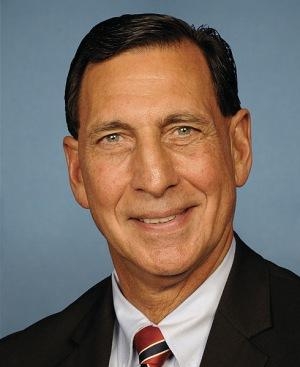Bill Now Goes To Full House For Consideration
The U.S. House Transportation and Infrastructure committee on Wednesday unanimously passed the Small Airplane Revitalization Act of 2013. The bill, H.R. 1848, which was introduced by Congressman Mike Pompeo (R-KS) has 31 bipartisan co-sponsors. It directs the FAA to implement the FAA’s Part 23 Reorganization Aviation Rulemaking Committee (ARC) recommendations by December 31, 2015. The ARC’s goal, as stated by FAA Administrator Michael Huerta, was to double safety and cut certification costs in half for light GA airplanes. A companion Senate bill, S. 1072, was introduced by Senators Amy Klobuchar (D-MN) and Lisa Murkowski (R-AK) in May.

In a news release, Subcommittee on Aviation Chairman Frank LoBiondo (R-NJ) (pictured) pointed out that the general aviation industry includes nearly 600,000 pilots, employs roughly 1.3 million people, and contributes approximately $150 billion annually to the U.S. economy. However, current airplane certification regulations for general aviation are outdated, overly prescriptive, and prohibit the application and use of efficient and cost-effective safety solutions. H.R. 1848, introduced in the House by U.S. Rep. Mike Pompeo (R-KS), updates the Federal Aviation Administration’s (FAA) aircraft certification processes governing general aviation and reduces costs and regulatory burdens for bringing new products to market.
“I commend Congressman Pompeo for introducing this bill, which is really about good government,” LoBiondo said. “H.R. 1848 will make necessary, common sense reforms to the existing prescriptive regulatory regime, which will improve the safety of general aviation at half the cost and help revitalize this critical industry.”
The legislation requires the FAA to issue a final rule for new small airplane safety standards that will:
• Create a streamlined regulatory regime that improves safety and decreases costs
• Set safety objectives that stimulate innovation and technology adoption
• Replace the existing prescriptive regulatory regime with new standards for compliance and testing
• Use FAA-accepted consensus standards to clarify how updated safety objectives may be met by specific designs and technologies

“GAMA is extremely pleased that the House Transportation and Infrastructure Committee took this action today and is now sending H.R. 1848 to the full House of Representatives for consideration,” said GAMA President and CEO Pete Bunce. “The bill will help industry and FAA develop and adopt more effective, consensus-based compliance standards that would spur manufacturers’ investment in aircraft design and help put critical life-saving equipment into the existing fleet of airplanes.”
“The unanimous vote ... demonstrates the strong, bipartisan consensus in Congress for the FAA to act quickly to implement the ARC’s recommendations," Bunce said. "We appreciate the leadership of Chairman Bill Shuster (R-PA) and Ranking Member Nick Rahall (D-WV), and Aviation Subcommittee Chairman Frank LoBiondo (R-NJ) and Ranking Member Rick Larsen (D-WA) in moving this legislation quickly. We also appreciate Congressmen Rodney Davis (R-IL), Sam Graves (R-MO), Dan Lipinski (D-IL), Rick Nolan (D-MN) and Trey Radel (R-FL) for championing the bill during (the) mark-up. We look forward to working with the rest of their colleagues to ensure the bill’s passage in the full House.”

We applaud the committee’s swift and unanimous action to move this vital legislation forward for consideration on the House floor,” said NBAA President and CEO Ed Bolen. “By adopting the aircraft-specific, consensus-based certification standards recommended by the ARC, manufacturers could more swiftly implement new designs and technologies, while also enhancing safety and markedly reducing the time and cost necessary to achieve FAA certification.”
In a July 9 letter, NBAA joined with the Aircraft Owners and Pilots Association (AOPA); Experimental Aircraft Association (EAA); General Aviation Manufacturers Association (GAMA); and National Air Transportation Association (NATA) in urging committee members to act quickly on H.R. 1848.
 ANN's Daily Aero-Linx (05.02.24)
ANN's Daily Aero-Linx (05.02.24) ANN's Daily Aero-Term (05.02.24): Touchdown Zone Lighting
ANN's Daily Aero-Term (05.02.24): Touchdown Zone Lighting Aero-News: Quote of the Day (05.02.24)
Aero-News: Quote of the Day (05.02.24) ANN FAQ: Contributing To Aero-TV
ANN FAQ: Contributing To Aero-TV NTSB Final Report: Cirrus Design Corp SR20
NTSB Final Report: Cirrus Design Corp SR20





